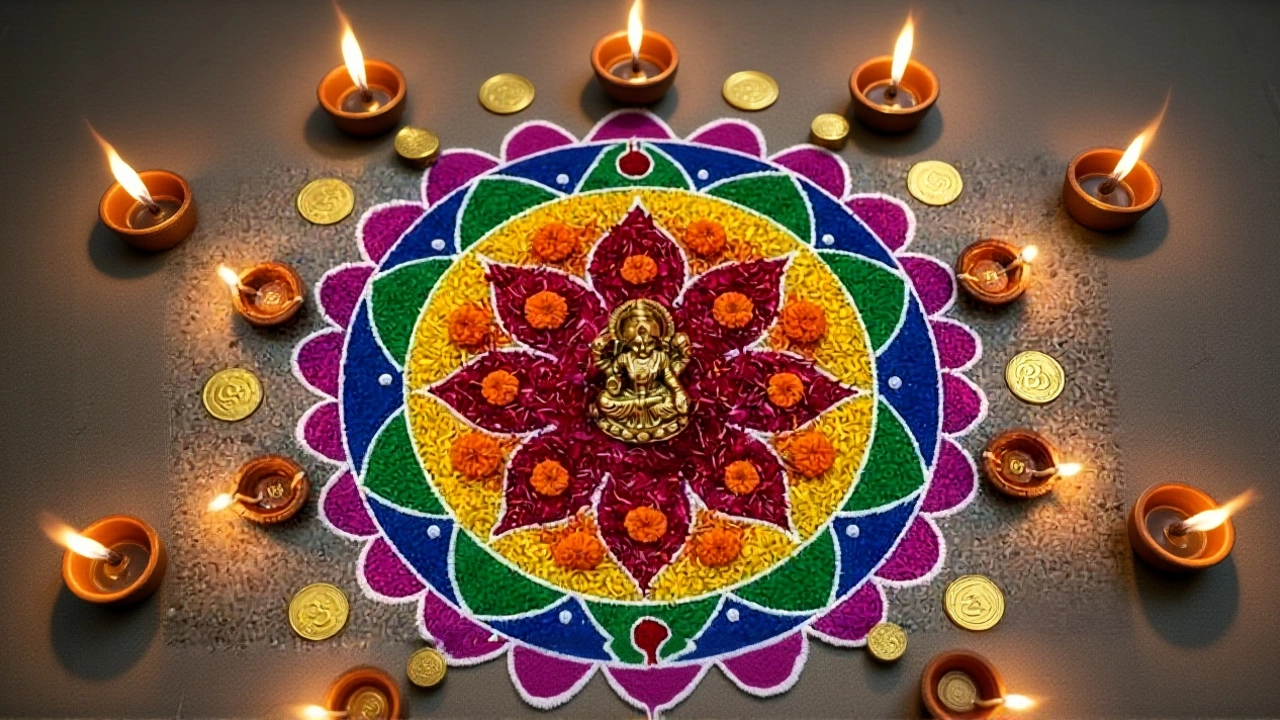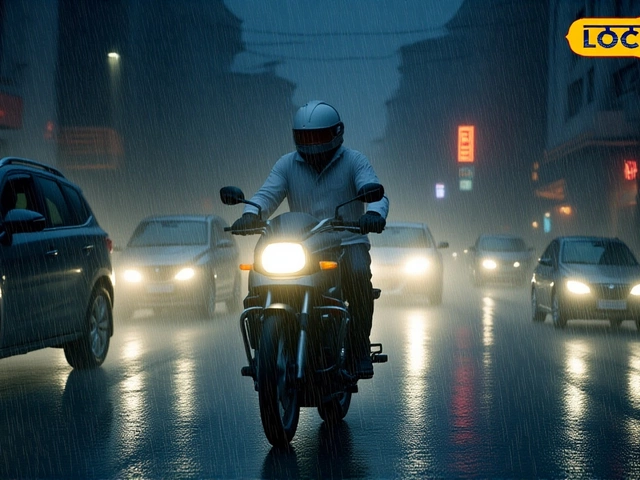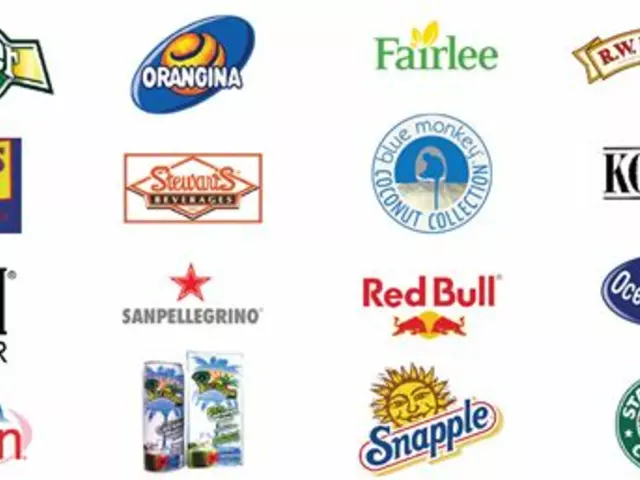When Diwali 2025India arrives on Monday, October 20, families across the subcontinent will dust thresholds with colorful rangoli patterns, hoping to invite Goddess Lakshmi’s blessings. This year, the age‑old art form is getting a digital makeover thanks to Google’s newly released Gemini Nano Banana AI tool, which lets anyone turn a selfie or a simple prompt into a striking rangoli illustration. Early adopters like Ranu Art, a YouTube creator who posted a step‑by‑step tutorial on October 18, 2025, say the platform “opens a playground for tradition‑meets‑technology.”
Background: The Cultural Heartbeat of Rangoli
Rangoli—derived from the Sanskrit “rangavalli,” meaning rows of colour—has long been the visual welcome mat at Indian doorways. As the Times of India explained in an October 2025 feature, floral motifs crafted from marigold petals, rose powders, or fresh leaves are not merely decorative; they are believed to channel positive energy and invite Lakshmi, the goddess of wealth. Historically, the designs are traced back to ancient agrarian rituals where farmers traced geometric patterns in the soil to celebrate harvest abundance.
Emerging Trend: AI‑Generated Rangoli
The integration of artificial intelligence into rangoli creation marks a cultural pivot. NDTV Profit reported on October 17, 2025 that the Gemini Nano Banana tool allows users to input prompts such as “golden peacock with lanterns” and receive a high‑resolution digital rangoli in seconds. The same article highlighted how influencers are sharing these AI‑crafted images on Instagram, turning the practice into a social‑media‑ready experience.
According to a blog from the Radha Krishna Temple, the AI‑driven designs complement rather than replace traditional methods. “Think of it as a sketchbook,” says the blog’s author, “you can experiment with colour‑combinations before committing to powders on the floor.” This hybrid approach is especially appealing to urban millennials who lack space for large‑scale floor art but still wish to honour the ritual.
Top Five Rangoli Ideas for Diwali 2025
- Flower Rangoli: Fresh petals arranged in lotus or marigold borders, offering an aromatic, eco‑friendly décor.
- Diwali Peacock Rangoli: Vibrant blues, greens, and yellows mimicking a peacock’s plume, often accented with metallic glitter.
- Ganesh Rangoli: A central Ganesha outline surrounded by lamps and flower petals, symbolising removal of obstacles.
- Geometric Rangoli: Interlocking triangles, squares, and lines in bold contrasts—crimson‑gold or navy‑white—perfect for a modern aesthetic.
- Spiritual Symbol Rangoli: Incorporates Om, swastika, or deity silhouettes to invite divine grace.
Each of these concepts can be rendered traditionally with powders or digitally via Gemini Nano Banana, giving creators the flexibility to share instantly on platforms like Instagram or WhatsApp.
Creators Leading the Fusion Movement
Beyond Ranu Art, a cohort of artists is pushing the envelope. Swati Bora, known on Instagram as @kumaoni_soul, posted a carousel on October 15, 2025 showing a side‑by‑side comparison of a hand‑drawn floral rangoli and its AI‑enhanced counterpart, noting, “the AI adds depth I couldn’t achieve with limited pigments.” Similarly, Sakshi Ingle (@rangolibysakshi_official) has been livestreaming the creation of LED‑bordered rangolis, blending chalk outlines with programmable light strips.
Another notable name is Radhika Creation, who released a two‑minute tutorial on October 17, 2025 focusing on a Dhanteras rangoli that uses recycled paper cut‑outs—an eco‑conscious twist that resonates with younger audiences.
Impact and Future Outlook
The convergence of AI and tradition is reshaping how festivals are celebrated. Market analysts cited by Business Standard predict a modest surge in sales of digital art subscriptions in India, estimating a 12 % growth by the end of 2025. More importantly, the digital turn democratizes rangoli creation; anyone with a smartphone can now produce a gallery‑worthy design without mastering powder‑mixing techniques.
However, cultural purists warn that over‑reliance on screens could dilute the tactile community experience that defines Diwali gatherings. As noted by a senior curator at the National Museum of Indian Art, “the scent of fresh petals and the collective humming of a family working together are irreplaceable.” The debate underscores a broader question: will AI become a complementary tool or a substitute for hands‑on heritage?
What’s Next? Upcoming Events and Tools
Google has hinted at a “Rangoli Studio” feature slated for early 2026, promising templates that integrate AR (augmented reality) so users can project digital designs onto actual floors before drawing. Meanwhile, the World Diwali Council plans a virtual exhibition in December 2025 where participants can submit AI‑generated rangolis for a global audience, bridging diaspora communities.
Frequently Asked Questions
How can I create a digital rangoli using Gemini Nano Banana?
Download the Gemini Nano Banana app, select “Rangoli” from the template list, then type a prompt such as “golden lotus with candles.” The AI generates a high‑resolution image you can save or share instantly.
Are AI‑generated rangolis accepted in traditional celebrations?
Many families are embracing the hybrid approach: they display a printed version of the AI design alongside a small, hand‑drawn motif. While purists prefer fully manual art, the trend is gaining acceptance, especially among younger members.
Which rangoli design is most popular this year?
According to NDTV Profit’s October 17 survey, the geometric rangoli tops the list, with 42 % of respondents citing its bold shapes and ease of digital replication.
Can I use AI rangoli designs for commercial purposes?
Google’s licensing terms allow personal use and limited commercial use with attribution. For large‑scale printing or merchandise, you should review the app’s specific usage policy or obtain a commercial license.
What environmental benefits do digital rangolis offer?
Digital creations eliminate the need for powdered pigments, many of which are synthetic and non‑biodegradable. Sharing images online reduces waste and encourages eco‑friendly alternatives like flower petals or recycled paper.





